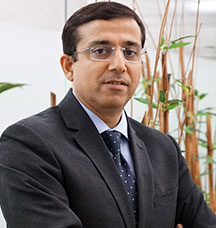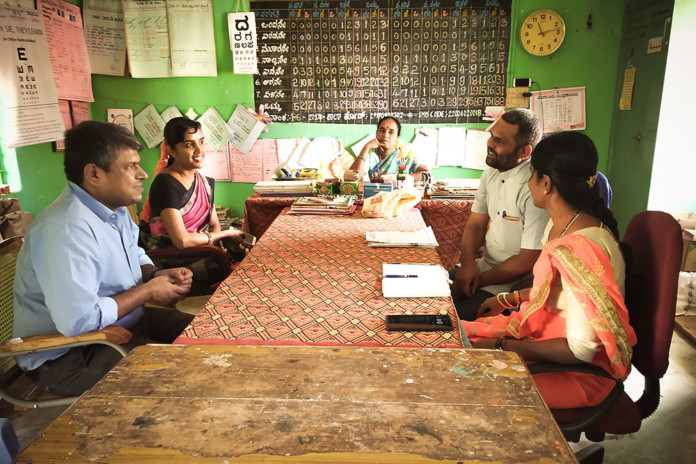STiR Education (STiR), a not-for-profit organization focused on supporting state education systems in India since 2012, signed its first corporate supporter in India, IDFC Asset Management Company (AMC). IDFC AMC will help STiR to develop the foundations of lifelong learning in partnership with the governments of Tamil Nadu and Karnataka. The model has been successfully tested and implemented in Delhi and today reaches 200,000 teachers and six million children across India and Uganda. STiR has set a goal of reaching 10 million teachers and 300 million children worldwide by 2030.

Vishal Kapoor, CEO at IDFC AMC, said “We found that STiR Education’s work of empowering teachers to create a force for change within their chosen profession addresses this unique challenge and can be scaled up to create maximum impact.”
The core of STiR’s approach empowering local teacher networks – groups of 20 to 30 teachers that meet each month and gain exposure to evidence-based ideas for improving their teaching practice. The networks strengthen connections between peers, laying the foundation for mutual support and sustainable improvement.
STiR works directly with district or regional government officials, who train and support school leaders to run these networks. This approach is designed to develop strong role-modelling and trusting relationships at all levels of an education system, and to maximize ownership and sustainability from governments.
Excerpts of Interview with IDFC AMC
What is IDFC AMC’s larger Sustainability Goals – what is the impact so far?

Before April 2019, IDFC Foundation used to manage the CSR activities for all the companies under the IDFC umbrella. From April 2019 onwards, IDFC AMC started managing the CSR activities within the company and created a volunteer led group. The area of intervention that IDFC AMC focuses on is Promoting Education, including access to quality education, skill development and vocational training. In line with the chosen theme, IDFC AMC has chosen to work with organizations like STiR Education that aims to create a sustainable model aimed at creating an impact with a specific set of stakeholders, in this case, the teachers. As in the case of all our CSR projects, we hope to see the impact over the next 3 -5 years.
What’s the amount of grant IDFC AMC is offering and for how long?
In the case of STiR Education, IDFC AMC has committed to donating a little shy of Rs. 40 lakh for the first year and are keen to continue working with the organization for a minimum of 5 years.
Share the Delhi model which you want to replicate in Karnataka and TN
In Delhi, our partnership is with the State Council for Education Research and Training (SCERT), and we have been working together in every secondary school since 2017. The program in Delhi is known as the TDC program. Every school has appointed a Teacher Development Coordinator to lead on teacher development, and they are responsible for leading on our program in their schools. The TDCs run network meetings and complete developmental observations of their colleagues. And they receive support from 200 Mentor Teachers who work across 5-6 schools.
A full articulation of the TDC program is found here in a report created by the SCERT. And we have also developed two case studies of how the program is working in specific districts here and here.
How is your teacher cluster model unique – what has been the outcome so far
We believe that there are two unique points to our model – the focus on role-modelling and relationships at all levels, and our partnership model with governments. The former is outlined above – we’re convinced that if every member of the system models the foundations of lifelong learning in their daily practice, the impact at child level can be huge.
We’ve cumulatively reached 1.8 lakh teachers and 47 lakh children in India, at an annual cost of less than $0.50 per child. We’re now aiming to reach 10 lakh teachers and 3 crore children across India by 2025.
We’ve completed 13 evaluations (both internal and external) since 2012 to understand the impact of our intervention. Most recently for our Delhi program, Education Development Trust published a report last year entitled ‘System scaling in Delhi’. In partnership with DFID, they acted as a ‘learning partner’ to our scaling to work with every government secondary school in Delhi (from 100 to 1,024 schools in just a few months).
Their report showed that after just two years of our system learning partnership, our approach has become deeply embedded in the Delhi education system. Two of the main reasons for this are a much more advanced understanding among headteachers about the roles and responsibilities of system officials so that they know who to approach for different types of report; and an increased growth mindset among these headteachers that they can improve their schools with the support of these officials. More detail on this report can be found here.
How are you rolling out the plan in Karnataka and Tamil Nadu?
We actually already work in both of these states – we are operating in seven districts in Karnataka and in three districts in Tamil Nadu. The model is different to Delhi as it is tailored to the different structures that exist within these states, but the overall approach is the same, with network meetings led by government officials.
What we’re rolling out now – and with the generous support of IDFC AMC – is a new approach to work across the whole states. We are partnered with the DSERT in Karnataka and with Samagra Siksha Tamil Nadu, and we’re currently working with both governments to understand how a state-wide approach might work, with a view to starting a pilot in some new districts next academic year. These two states alone would enable us to reach more than 60 lakh children.
In our existing districts, our monthly progress checks show that 60% of teachers in Karnataka and 85% of teachers in Tamil Nadu are already trying out new practices in their classrooms. And more than 80% of the features of student engagement have been observed in classrooms. In both cases, this progress is well beyond our expectations for this stage of the program. We’re now excited by the prospect of realizing a similar impact at much greater scale in partnership with IDFC AMC.









